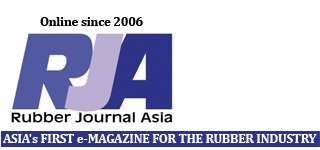NATURAL rubber has lately been in the limelight for the wrong reason. Most of the recent publicity has been dominated by the not so good news of low rubber prices. The oversupply and poor demand situation, especially the China factor, has dampened rubber prices. It is unfortunate that the price of natural rubber has remained low for a few years now. The benchmark SMR 20 has been hovering around RM5 per kg. And the smallholders who now form the bulk of rubber growers in the country are most affected. The big plantation houses no longer grow much rubber. This is made worse by the fact that rubber smallholders are still among the deprived lot in the country. Fortunately the government is always there to offer help to tide over the difficult period. But for how long? Natural rubber farmers in the country are always at the mercy of world rubber prices. When world rubber prices are buoyant, they are well compensated. But at a time when rubber prices hit the low end, they have no where else to turn to. They are also at the mercy of the weather. Rainy days are a no no since they cannot tap rubber. Businesses which use natural rubber to manufacture all kinds of products are not as badly affected. In fact the lower prices are a boon for them. Their fate is determined more by the market demand for their products. They thrive on margins. Not the farmers. Whatever losses suffered in the downstream business can often be passed down to the farmers. Even the cess for research are effectively paid by the growers. It is an irony really. The fact is if rubber smallholders abandon rubber growing, not only are the rubber products people affected but also equally affected are the rubberwood furniture makers. It has been reported that the bulk of the nation’s furniture exports are those made from rubberwood. There must be a serious rethink about the entyre natural rubber industry in the country. In order to sustain supply, rubber prices must be sustained at reasonable levels. Prices should be high enough for smallholders to have decent incomes. And low enough for downstream manufacturers to enjoy good enough margins. For many years, the demand side has been dominated by the tyre sector. This must change. New uses must be created. Research must be devoted more to downstream applications rather than trying to solve the never ending tapping woes of production. Recently, it was announced that there are plans to channel much of the rubber stocks for road making. This can only be short-term. It is low value. Research must spend more time breaking this natural hydrocarbon into components which can find demand in the other sectors of the chemical industry. Research must explore new opportunities to blend with other polymers to produce new materials. For a number of years now, the downstream rubber business in the country has been skewed towards latex gloves. In fact, the big four producers of Asean — Thailand, Indonesia, Vietnam and Malaysia — all compete in the same examination gloves and condom sector. It is time this changed. Malaysia has tried for many years to expand the non-latex products market but with limited success. We need to reexamine that strategy and pursue as an Asean partnership of the big four. Imagine producing the non-latex rubber products for Asean’s 600 million population. It is a big boost to the Asean economy. Since most rubber products in the market are made up of both NR and synthetic rubber, this can catalyse the growth of the synthetic rubber business here as well. This is not impossible because Asean is also endowed with plentiful petroleum resources. And the best place to start such Asean rubber products venture is within the premises of the Rubber City that has now been earmarked in Kedah at the Malaysia-Thai border. It is the most optimal location considering the fact that it is also not far from Sumatra, Indonesia’s major natural rubber province. Once successful, similar centres can be replicated elsewhere on the borders of other Asean partners. That will certainly assure that NR is not heading for the sunset! NR will defintely bounce back! Together Asean can make a lot of difference to the future of NR. Asean can bring back the shine in natural rubber!

